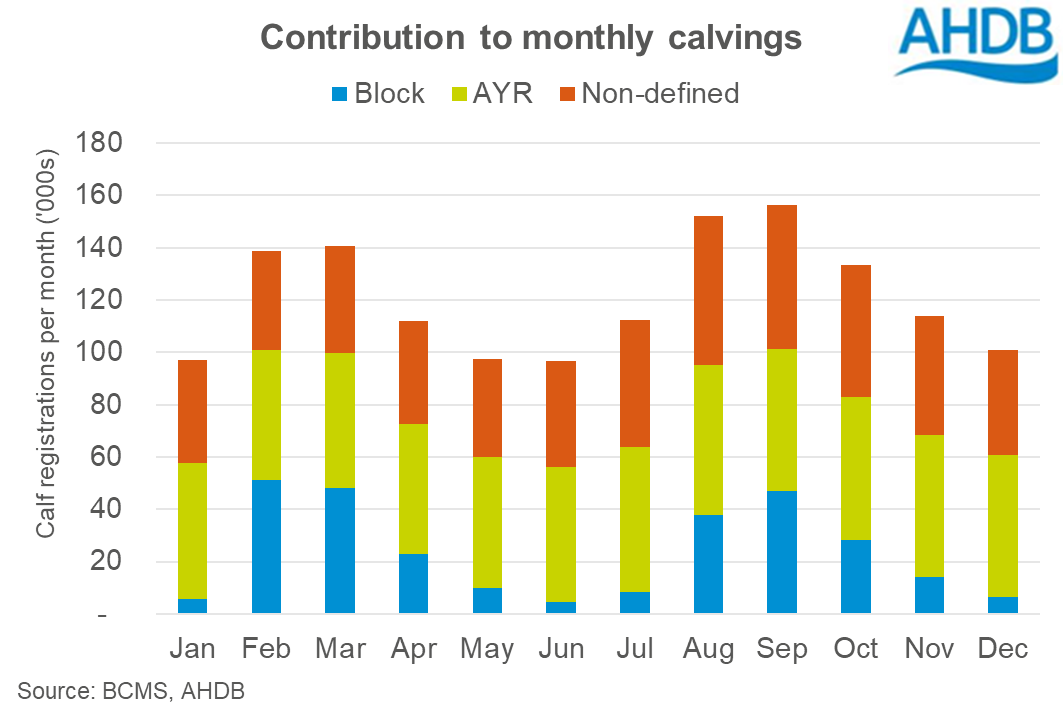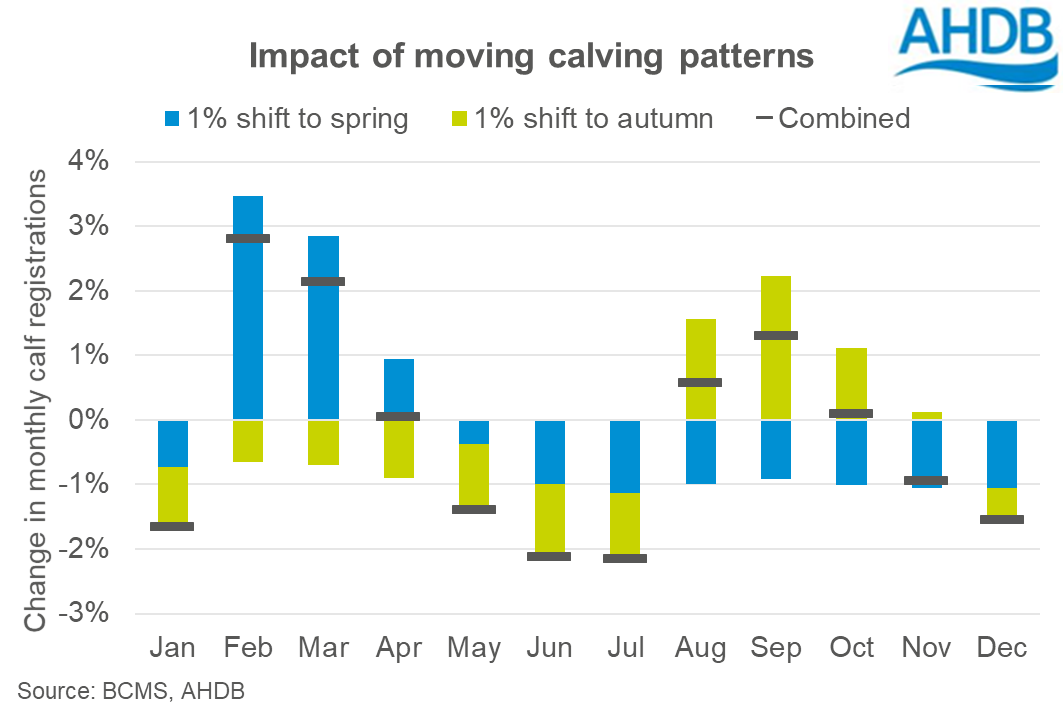The impact of block calving on GB calf births
Wednesday, 25 August 2021
By Chris Gooderham
Overall calf births to dairy dams show peaks in the spring (Feb/Mar) and autumn (Aug/Sep). Over recent years we’ve seen these peaks increase, while births in May and June have been falling.
Breaking monthly calf registrations down by farm system, allows us to better understand what is driving the movement in overall calf births.
According to data from BCMS, 19.6% of calf registrations in 2020 on dairy farms came from those operating block calving systems. However, in the key calving months of Feb, Mar, Aug and Sep block calving herds can account for around a third of overall calf registrations. The proportion from block calving herds peaks in February at 37%. Conversely, the block calving herd share in June drops to just 5%.

What happens if more become block calvers?
The breakdown of calf registrations allows us to analyse what might happen if more of the non-defined herds move to block calving. The seasonality of calf births for block calvers means a small swing in herds can have a disproportionate impact on individual months.

The charts shows the impact of a 1% increase* in spring block or autumn block calving. It shows that February births would actually increase by 3.5% if we had 1% more spring block herds.
Often an increase in autumn block calving offsets the impact from an increase in spring block calving. However, this isn’t the case in May-Jul or Dec-Jan, where the two block calving systems both lead to a drop in monthly calvings.
Over the coming weeks we will review the impact on the GB milk production profile from the different systems.
* Assumes any additional block calvers come from the non-defined group

Subscribe to our Dairy Market Weekly newsletter and receive market updates in your inbox every Thursday
Sign up to receive the latest information from AHDB.
While AHDB seeks to ensure that the information contained on this webpage is accurate at the time of publication, no warranty is given in respect of the information and data provided. You are responsible for how you use the information. To the maximum extent permitted by law, AHDB accepts no liability for loss, damage or injury howsoever caused or suffered (including that caused by negligence) directly or indirectly in relation to the information or data provided in this publication.
All intellectual property rights in the information and data on this webpage belong to or are licensed by AHDB. You are authorised to use such information for your internal business purposes only and you must not provide this information to any other third parties, including further publication of the information, or for commercial gain in any way whatsoever without the prior written permission of AHDB for each third party disclosure, publication or commercial arrangement. For more information, please see our Terms of Use and Privacy Notice or contact the Director of Corporate Affairs at info@ahdb.org.uk © Agriculture and Horticulture Development Board. All rights reserved.

